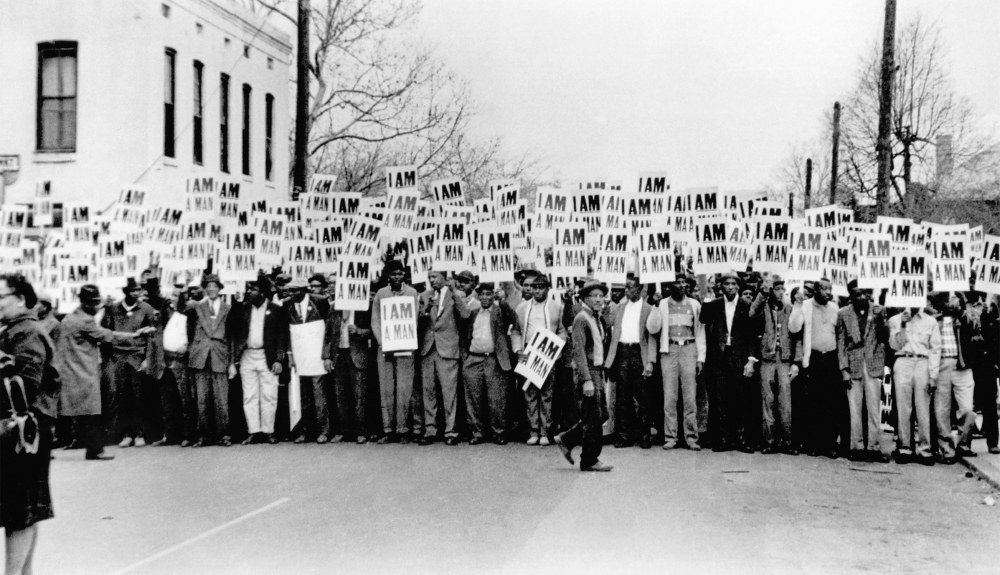
Ernest C. Withers’ Images of Black Life in the American South
30 Aug 2021
by Miss Rosen
A new book and exhibition explore the Civil Rights era work of a former police officer turned photojournalist.
Working at a time when mainstream American publications rarely hired Black photographers, Dr. Ernest C. Withers, Sr. (1922 – 2007) made a way. His work, on view in the exhibition “I’ll Take You There” and new book The Revolution in Black and White: Photographs of the Civil Rights Era by Ernest C. Withers (CityFiles Press) provides a look at Black life in the American South during the height of Civil Rights Movement.
Hailing from Memphis, Tennessee, Williams became one of the first nine Black police officers to join the force in 1948 after serving in the Pacific Theater during World War II. Although Withers was given a uniform, patrol car, and gun, he was forbidden to patrol white communities or arrest white folks. His power was proscribed strictly within the confines of Black Memphis, during the height of segregation.
Off duty, Withers photographed the same community, documenting the fabled Beale Street music scene, the birthplace of Memphis Blues icons like B. B. King. After getting caught selling liquor illegally, Withers left the force to work as a freelance photographer. He shot for the Tri-State Defender, the Memphis offshoot of Chicago’s famed Black newspaper and legendary photo magazines Ebony and Jet, while also working as Stax Records’ official photographer for 20 years.
Withers’ business cards bore the slogan “Pictures Tell The Story” — a philosophy he used over the course of six decades to create more than one million images. But it wasn’t until years after his death that the bombshell dropped — documents revealed Withers worked as a paid FBI informant.
A Complex Legacy
In 1955, Ernest Withers was the only photographer to document the entire Emmett Till murder trial — the brutal lynching of a 14-year-old boy that would ignite the Civil Rights Movement in the South. Withers, who traveled with Dr. Martin Luther King Jr., photographed the Civil Rights’ leader’s work from his first major initiative, 1956 Montgomery bus boycott to his last, the 1968 Memphis sanitation workers strike where the workers famously carried signs bearing the words “I Am a Man.” He also photographed the Little Rock Nine, a group of Black students who integrated Central High School in Little Rock, Arkansas in 1957, as well as the funerals of Civil Rights leader Medgar Evers in 1963 and Dr. King in 1968.
But in 2010, under the Freedom of Information Act, the FBI released documents indicating that Withers began working as an informant shortly after making his first photograph of Dr. King in 1956 — a revelation that was said to be both shocking but not surprising. First investigated by the FBI in 1946 for having suspected communist ties, Withers’ work as an informant came to an end after tapes revealed he was using his position to try to free a young Black man facing a long prison sentence for a first-time offense.
In the 2019 book, Bluff City: The Secret Life of Photographer Ernest Withers, author Preston Lauterbach wrestles with Withers’ complex legacy. Without Withers here to share his side of the story, Lauterbach shared his doubts in an interview with The Intercept, asking, “You have to wonder, was Withers masking? That is, was he telling the FBI what it wanted to hear?”
It’s impossible to know. What remains are the images. “Photography is a collection of memories. One who is trained in photography knows that," the exhibition press release quotes Withers as saying. “Instinctively, people who have an occupation know what they ought to do. You call the fireman to put out the fire; you call the police to solve a police problem; and people who are news people and journalists are collectors and recorders of present evidence, which after a given length of time—days, months, years becomes history.”
By Miss Rosen
Miss Rosen is a New York-based writer focusing on art, photography, and culture. Her work has been published in books, magazines, including Time, Vogue, Aperture, and Vice, among others.
Ernest C. Withers: "I’ll Take You There", Fahey/Klein Gallery, 148 N La Brea Ave, Los Angeles, CA 90036, YSA. Through September 4, 2021.
The Revolution in Black and White: Photographs of the Civil Rights Era by Ernest C. Withers, published by CityFiles Press, $49.95.